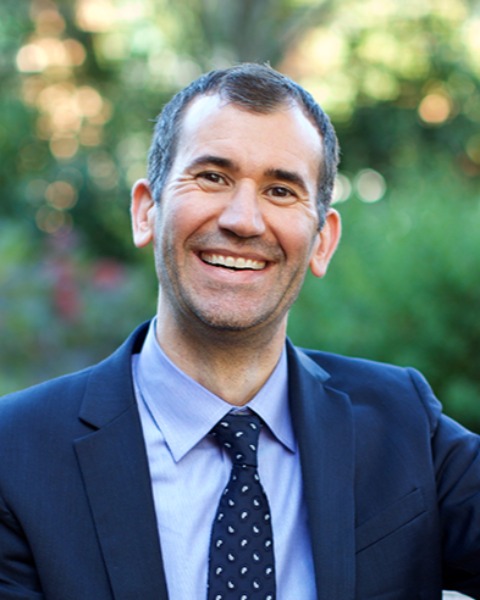Back
Poster, Podium & Video Sessions
Podium
PD26: Bladder Cancer: Non-invasive I
PD26-10: Comparison of Intravesical Therapy and Surgery as Treatment Options for Recurrent Bladder Cancer (CISTO): Update on an Ongoing Multicenter Pragmatic Study
Saturday, May 14, 2022
2:30 PM – 2:40 PM
Location: Room 252
John Gore*, Erika Wolff, Bryan Comstock, Kristin Follmer, Michael Nash, On Ho, Seattle, WA, Stephanie Chisolm, Bethesda, MD, Doug MacLean, Jenney Lee, Sarah Lawrence, Seattle, WA, Danielle Lavallee, Vancouver, Canada, Yair Lotan, Dallas, TX, Gary Steinberg, New York, NY, Sima Porten, San Francisco, CA, Larry Kessler, Seattle, WA, Angela Smith, Chapel Hill, NC, CISTO Collaborative, Seattle, WA

John Lawrence Gore, MD,MS
University of Washington
Podium Presenter(s)
Introduction: Patients with non-muscle-invasive bladder cancer (NMIBC) that recurs after treatment with intravesical Bacillus Calmette-Guerin (BCG) must weigh the risk of progression of bladder cancer and loss of a window of potential cure with medical therapy against the risk of morbidity and loss of quality of life (QOL) with radical cystectomy. The CISTO Study (NCT03933826) is a pragmatic, prospective observational cohort study comparing medical therapy (i.e., intravesical therapy or systemic immunotherapy) with radical cystectomy for recurrent high-risk NMIBC. Here we report on the design and progress of the CISTO Study.
Methods: 900 patients with recurrent high-risk NMIBC that has failed first-line BCG and who have chosen to undergo standard of care treatment will be enrolled. Patient stakeholders helped determine the primary outcome: 12-month patient-reported QOL using the EORTC QLQ-C30. Secondary outcomes include urinary and sexual function, decisional regret, financial distress, healthcare utilization, return to work/normal activities, progression, and recurrence-free, metastasis-free, and overall survival. Participants will be followed for up to 3 years.
Results: Enrollment is active at 32 sites across the US, including 23 university-based centers and 9 community sites. As of November 1, 2021, 173 participants have been enrolled, 104 of whom chose medical therapy and 69 of whom chose radical cystectomy. The completion rate for the primary outcome of QOL at 12 months is 94% (15 out of 16 participants to date). The inclusion of electronic consent and collection of PROs allowed recruitment and follow-up to continue remotely during the COVID-19 pandemic. Significant pandemic-related challenges have included slow study start-up at sites, staffing, periods of suspension, and delays in patients obtaining care. Strategies to address these challenges include improved methods for onboarding and training sites, all-site communication, confirming study eligibility, abstracting EHR data, and remote monitoring while adhering to the highest study standards.
Conclusions: The CISTO Study will compare patient reported outcomes for those undergoing medical therapy with radical cystectomy for recurrent high-risk NMIBC. The CISTO Study has the potential to fill critical evidence gaps and provide for personalized, patient-centered care.
Source of Funding: This work was supported through a Patient-Centered Outcomes Research Institute (PCORI) Award (PCS-2017C3-9380).
Methods: 900 patients with recurrent high-risk NMIBC that has failed first-line BCG and who have chosen to undergo standard of care treatment will be enrolled. Patient stakeholders helped determine the primary outcome: 12-month patient-reported QOL using the EORTC QLQ-C30. Secondary outcomes include urinary and sexual function, decisional regret, financial distress, healthcare utilization, return to work/normal activities, progression, and recurrence-free, metastasis-free, and overall survival. Participants will be followed for up to 3 years.
Results: Enrollment is active at 32 sites across the US, including 23 university-based centers and 9 community sites. As of November 1, 2021, 173 participants have been enrolled, 104 of whom chose medical therapy and 69 of whom chose radical cystectomy. The completion rate for the primary outcome of QOL at 12 months is 94% (15 out of 16 participants to date). The inclusion of electronic consent and collection of PROs allowed recruitment and follow-up to continue remotely during the COVID-19 pandemic. Significant pandemic-related challenges have included slow study start-up at sites, staffing, periods of suspension, and delays in patients obtaining care. Strategies to address these challenges include improved methods for onboarding and training sites, all-site communication, confirming study eligibility, abstracting EHR data, and remote monitoring while adhering to the highest study standards.
Conclusions: The CISTO Study will compare patient reported outcomes for those undergoing medical therapy with radical cystectomy for recurrent high-risk NMIBC. The CISTO Study has the potential to fill critical evidence gaps and provide for personalized, patient-centered care.
Source of Funding: This work was supported through a Patient-Centered Outcomes Research Institute (PCORI) Award (PCS-2017C3-9380).

.jpg)
.jpg)